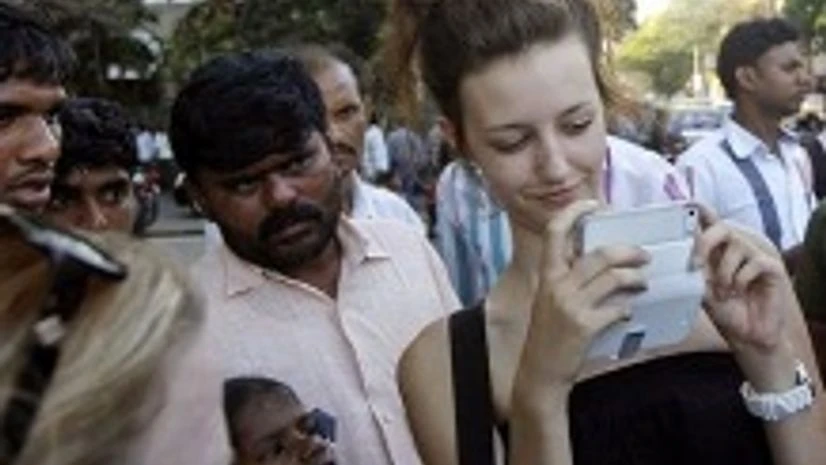The number of tourists availing of electronic tourist visa (eTV) from Japan, New Zealand, Singapore, the Philippines and Indonesia could tell a story the government might have missed. These countries were among the 12 moved from a visa-on-arrival (VoA) platform (which enabled tourists to land in India without any prior paperwork) to eTVs (for which a tourist has to complete the paperwork in his home country but which helps in grant of tourist visa within 96 hours).
Data on tourists from these countries show after the e-visa facility was extended, the number of arrivals has dropped for four of the five countries named. While the number of tourists from Japan, New Zealand, the Philippines and Indonesia during December 2014 to April 2015 declined, compared to the previous period (when visa on arrival was applicable), the number of tourists from Singapore has risen marginally. Under the VoA policy, these were among the countries accounting for a considerably large number of tourists to India, with healthy year-on-year growth.
Some countries with a lower base, such as Cambodia and Laos, have shown a decline in tourist numbers in December 2014-April 2015 (this coincided with a switch from visa-on-arrival to e-visa). However, Finland, Vietnam, Myanmar and Luxembourg, countries with a low base of tourists to India, have shown an increase after the visa was introduced.

The eTV facility was introduced in India in November 2014 for 46 countries, now grown to 76 countries. Official data, suggesting a 1,000 per cent rise in tourist numbers, fallaciously compares the visa on arrival and e-tourist visa platforms. The confusion extends to nomenclature, too. E-tourist visas were earlier called Tourist Visa on Arrival enabled by Electronic Travel Authorisation; politicians and bureaucrats often termed these 'tourist visa on arrival'. The confusion in the name led to deportations, too.
“There have been many instances in which people had to be deported because of the assumption of the new policy being the same as the VoA (visa on arrival) policy. A friend from New Zealand flew down after the VoA policy had been scrapped. As he was without the required paperwork, he was deported,” said Subhash Goyal, president, Indian Association of Tour Operators.
Since then, these visas were renamed e-tourist visas and the VoA facility was formally scrapped. India-bound flights had been instructed not to let people board without e-tourist visa validation, Goyal said.
According to documents reviewed by Business Standard, in the five months since the introduction of e-visas, about 32,000 tourists from the US alone visited India. Together, the 12 countries in the now-defunct VoA list sent about 19,000. In 2013, India recorded about seven million foreign tourist arrivals, with over a million from the US. The government’s 1,000 per cent increase in figures can be simply traced to the addition of countries with a history of higher tourist inflow to the eTV list.
“The e-tourist visa performs the role of a facilitator; it is not a means unto itself for increasing foreign tourist arrivals. Unless the country’s infrastructure and tourism is promoted to international standards, it will not amount to much. Since a large portion of the tourists from Japan were solo female travellers and female groups, Japan’s marked decline in particular could be attributed to the perception of India being unsafe,” said an analyst.
In the past five months, the top five countries in terms of tourist arrivals are the US, Germany, Russia, Australia and Ukraine. But documents reviewed by this newspaper show 14 per cent of those from the US who were granted e-visas to India have dropped their plans. Germany follows with 12 per cent; nine per cent of Russians decided against visiting India after e-visa approval.
“The new e-tourist visa policy encourages the impulse of travelling to India at a moment’s notice,” says Parvez Dewan, former tourism secretary, under whom the e-visa policy was formalised. Perhaps that is the only silver lining, as foreign tourist arrivals invariably translate into foreign exchange inflow.

)
